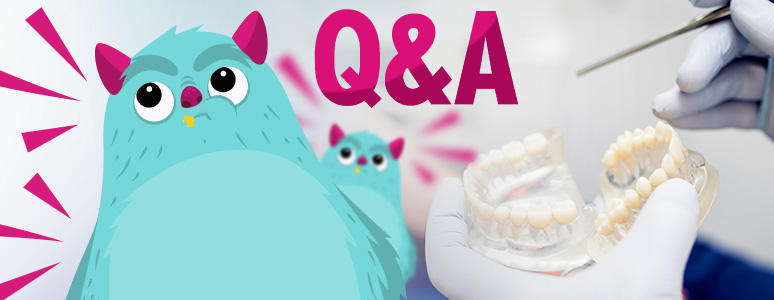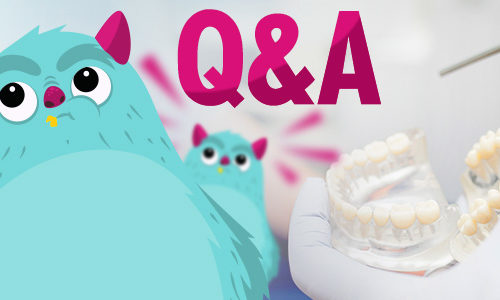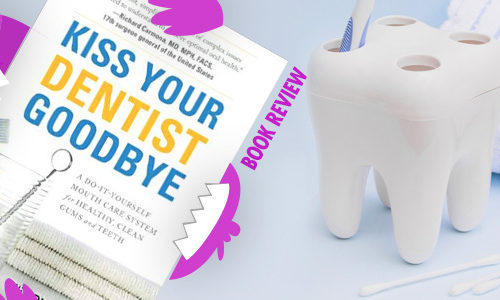-
Tooth Cracked in Half With No Pain – What Should I Do?
This article is a part of our Q&A series in which we give detailed answers to our readers' questions. Have a question? Don't hesitate and send it to us to get a detailed answer! Having a tooth cracked in half can be a concerning situation, especially if you are unaware of how to address the issue. Surprisingly, it’s possible to experience no pain even if a tooth cracks, which can sometimes cause individuals to underestimate the seriousness of the situation. This guide aims to provide you with comprehensive information on handling a tooth cracked in half without pain. Cracked Tooth – What Does It Mean? When a tooth is cracked…
-
Why Are Teeth Cracking?
This article is a part of our Q&A series in which we give detailed answers to our readers' questions. Have a question? Don't hesitate and send it to us to get a detailed answer! Experiencing cracks or breaks in one’s teeth is a common dental concern. This Q&A answer aims to shed light on the possible reasons behind teeth cracking or breaking off and the measures one can take to address and prevent these issues. Tooth Cracks and Breaks Tooth cracks and breaks range from minor chipping of the enamel to severe fractures that expose the tooth’s inner layers. Such damage can not only compromise the structural integrity of the…
-
How Many Teeth Humans Have?
This article is a part of our Q&A series in which we give detailed answers to our readers' questions. Have a question? Don't hesitate and send it to us to get a detailed answer! Teeth are an essential part of the human anatomy, playing a crucial role in speech, digestion, and appearance. Humans, like other mammals, are diphyodont, meaning they develop two sets of teeth over their lifetime. This guide will delve into the number and types of teeth humans have at various stages of life, as well as provide some insights into dental health. Primary Teeth: The First Set The first set of teeth that humans develop are known…
-
How To Temporarily Fill a Hole in Your Tooth?
This article is a part of our Q&A series in which we give detailed answers to our readers' questions. Have a question? Don't hesitate and send it to us to get a detailed answer! When you have a hole in your tooth, it is important to see a dentist as soon as possible. However, there may be times when you cannot make it to the dentist immediately and need a temporary solution to avoid pain or prevent the hole from getting worse. This guide will help you understand how to temporarily fill a hole in your tooth. What Causes a Hole in a Tooth? A hole in a tooth, often…
-
Are Teeth Bones?
This article is a part of our Q&A series in which we give detailed answers to our readers' questions. Have a question? Don't hesitate and send it to us to get a detailed answer! A common question that often comes up when discussing dental health and anatomy is, “Are teeth bones?” While teeth and bones share some similarities, they are, in fact, different structures. Here’s a short guide to understanding the similarities and differences between teeth and bones. Basic Structure Teeth Teeth are composed of several layers: Enamel: The outermost layer, enamel is the hardest substance in the human body and primarily consists of hydroxyapatite, a crystalline calcium phosphate. Dentin:…
-
Avulsed Tooth (Knocked-Out Tooth) – First Aid in Milk, Treatment, Management, What to do
Key Facts An avulsed tooth refers to a tooth that has been completely knocked out of its socket It is a dental emergency that requires immediate attention The tooth has the best chance of survival if it is replaced within 30 minutes of being knocked out Avulsion can happen to anyone but is more common in people involved in contact sports or physical activities The long-term prognosis of an avulsed tooth depends on various factors, including the condition of the tooth, how long it was out of the mouth, and the treatment received What is an Avulsed Tooth? An avulsed tooth is one that has been completely displaced from its…
-
Tooth Agenesis – Treatment, Meaning, Mutation, Genetic, Causes, Definition
Tooth agenesis, or congenitally missing teeth, is a condition where certain teeth are absent in the primary or permanent dentition. This phenomenon can affect any tooth but is most common in the lateral incisors, maxillary incisors, and third molars. Familial and nonsyndromic tooth agenesis suggest a strong genetic component. Understanding this dental anomaly is crucial for effective management in restorative dentistry and orthodontics. Key Facts Tooth agenesis is a developmental condition where there is an absence of one or more primary or permanent teeth It can affect both the primary and permanent dentition Tooth agenesis can be classified into three types: Anodontia, Hypodontia, and Oligodontia This condition can be caused…
-
Loose Teeth (Permanent Teeth in Adults) – Causes, Treatment, Care, Remedy, Meaning
Key Facts Loose teeth in adults are not a normal occurrence and should be treated as a dental concern Several factors including gum disease, trauma, and systemic diseases can contribute to loose teeth Preventative measures such as maintaining good oral hygiene and regular dental check-ups can help in avoiding loose teeth The management of loose teeth depends on the underlying cause Causes of a Loose Tooth in an Adult There are several reasons why an adult might experience a loose tooth. Here are some of the most common causes: Periodontal Disease: Also known as gum disease, it is one of the leading causes of loose teeth. In advanced stages, the…
-
Dens in Dente Tooth – Radiograph, Treatment, Classification, Causes
Dens in dente, also known as dens invaginatus, is a developmental anomaly that results in an abnormally shaped tooth. Dens in dente is a result of an invagination in the dental papilla during tooth development, which can occur in various teeth but is most commonly seen in the maxillary lateral incisors but can also involve other anterior teeth. This article explores the complexities of dens in dente, focusing on its clinical examination, diagnosis, and treatment options. Dens invaginatus originates from an invagination of the enamel organ into the dental papilla during tooth development. This can lead to a variety of associated anterior crown forms, often resulting in complex tooth morphology.…
-
Can a Broken Front Tooth be Saved?
This article is a part of our Q&A series in which we give detailed answers to our readers' questions. Have a question? Don't hesitate and send it to us to get a detailed answer! The sudden realization that a front tooth is broken can be alarming and distressing. The good news is that advancements in dental technology have made it possible to save a broken front tooth in many cases. This article explores the various aspects of dealing with a broken front tooth and the options available for saving it. The ability to save a broken front tooth depends on the extent of the damage. The break could be a…



